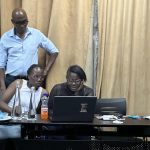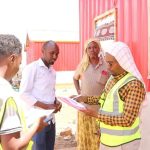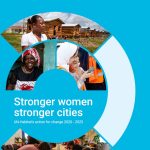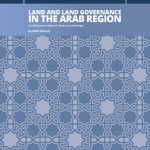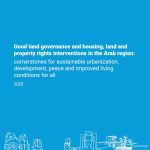Philippines
GLTN’s work in the Philippines emerged from a regional convention on STDM awareness in the Asia Pacific, “Learning Event on the Use and Application of Social Tenure Domain Model” held in Manila, Philippines, 22-25 October 2013’, through the support of Slum Dwellers International (SDI) and the GLTN, facilitated by the UN Habitat. This event brought together participants from four Asia-Pacific countries including the Philippines network members within the SDI, (the Homeless People’s Federation Philippines, Inc. and the Philippine Action for Community-Led Shelter Initiatives, Inc.), the Asian Coalition for Housing Rights (ACHR), Habitat for Humanity, the private and government sectors as well as communities, for purposes of learning, sharing experiences and finding out how they could work collectively in testing and applying the STDM tool and process towards the tenure improvement for informal settlement dwellers. The event informed participants of the STDM potential in assisting communities to manage their own information in terms of land tenure at the community level. Based on this event, Homeless People’s Federation Philippines, Inc.(HPFPI) and the Technical Assistance Movement for People and Environment, Inc. (TAMPEI), both of whom work with the urban poor living in informal settlements across the Philippines and who had become proponents of the STDM, proposed its piloting and implementation in two cities within the Philippines.
Implementation of the Social Tenure Domain Model to Enhance Community Development Initiatives in the Philippines Project
From 2015 to 2017 the activities within this project promoted participation of professionals, particularly geodetic engineers, and representatives of urban poor communities in applying the STDM tool and process towards the tenure improvement for informal settlement dwellers. Achieved objectives of the project were;
- Promoted the sharing of knowledge and lessons on the application of STDM among communities, NGO workers, and technical professionals;
- Building the capacity the urban poor communities on the use of the STDM tool and self-reliance in management of generated settlements’ information;
- Developing partnerships between the Philippine Alliance and the academia, specifically the Geodetic Engineers of the Philippines – National Capital Region (GEP-NCR) Regional Division and the FIG Young Surveyors Network (YSN) towards access to land for the poor; and enhanced competency for customizing STDM based on the specific information requirements in the communities and on the particular purpose for which the information is needed.
The Alliance selected Davao City, located a thousand kilometers south of Manila and one of the most important cities in the Philippinesdue to the rapid urbanization it has undergone with a population of about 1,632,991 people (Philippines Statistics Authority, 2015). The Philippines National Statistical Office (2012) reports Davao as the only city outside the National Capital Region with a population of more than one million. As such, the city experienced significant migration of impoverished people who have settled in precarious informal settlements. The city is comprised of 182 barangays and was selected because of availability of mapped data from 37 communities under the CDA project. There was also support from the HPFPI network itself. The data from the 37 communities was analyzed using the STDM.
The STDM implementation has been implemented to support efforts of local communities in gathering community information, digital analysis and consolidation of the data, generation of reports as well as community certificates to improve tenure security at the grassroots level. In this phase of implementation, the STDM has emerged as a people-centered approach to collecting community information through geo-spatial enumerations and which facilitates empowerment of urban poor communities in collectively achieving their goal towards improving security of tenure. Through the participatory mapping process and bottom-up approach to settlements upgrading, communities have gained greater awareness of their settlements, enabling them to create realistic, justifiable solutions which they now use to elevate their identified issues or gaps in terms of service provision, for example on housing, water, electricity etc. to authorities at the Barangay and City levels. Through the STDM process, communities have demonstrated the potential to largely influence planning and development at the Barangay level. In time, they can do the same at the city and national levels.
A new project building on the successes of this pilot phase is underway.GLTN is working in partnership with three organizations in the Philipines, namely LinkBuild, Inc., Technical Assistance Movement for People and Environment, Inc., and Homeless Peoples’ Federation. Together, these organizations form the Philippine Alliance which works with the urban poor living in informal settlements across the Philippines. They also work with other vulnerable groups, such as communities living on land susceptible to natural and man-made disasters or those facing the threat of eviction. Through partnerships with local government and other stakeholders, they provide sustainable housing solutions for the urban poor. Each of these organisations has a particular role, and work together throughout the process of acquiring land tenure and providing new housing solutions for the urban poor.
Key Documents
- Innovative Urban Tenure in the Philippines: Challenges, Approaches and Institutionalization
- Innovative Urban tenure in the Phillipines – Summary Report 2012
- Tapping the Potential: The Role of Grassroots in Land Policy Implementation (Eng – 2012)
- Land and Resource Conflicts in the Philippines
- Harmonization and Mainstreaming of Forest and Local Land Use Plans in the Philippines
- Land Tenure and Poverty in Ancestral Domains in the Philippines
- Youth Engagement in Food Security and Land Governance in the Philippines
- Women, Land, And Agriculture in Relation to Food Security in the Philippines

